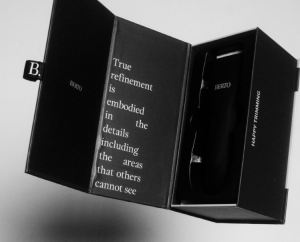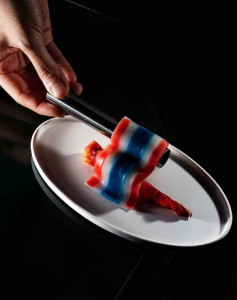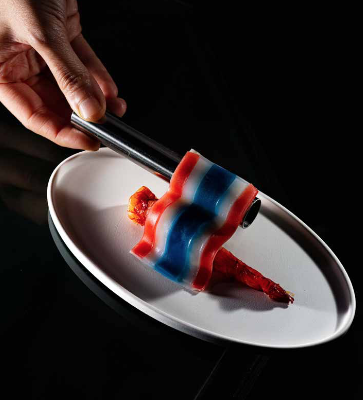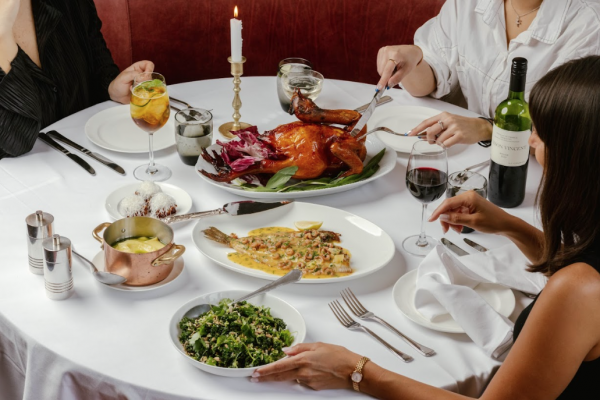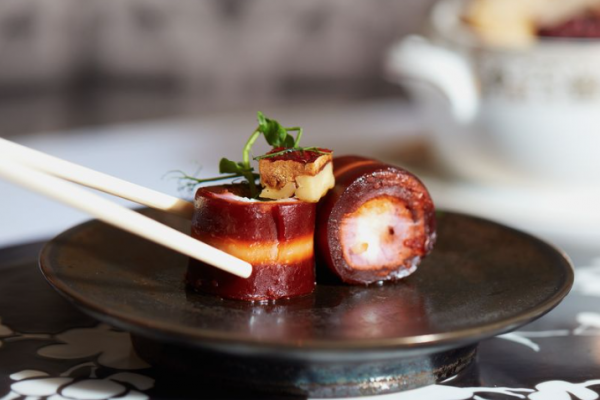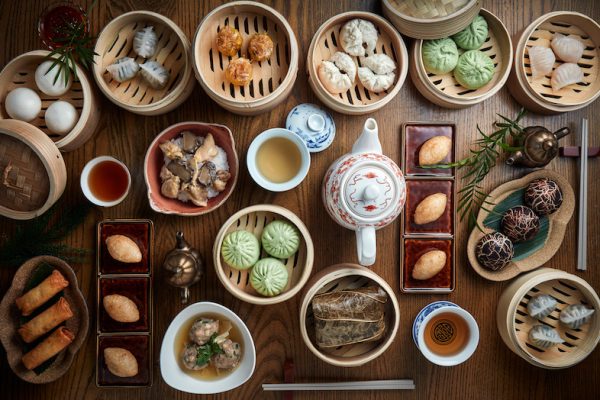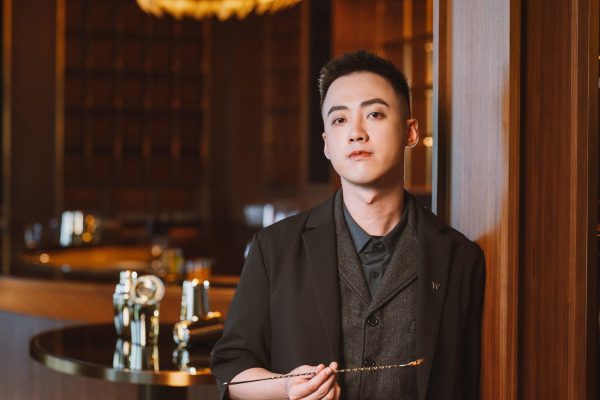Authentic classics will always hit the spot. But life is about evolving, and twists on the familiar can build a bridge between the well-known and the unknown. Stephenie Gee talks to five chefs reinventing their roots and finds out how they are making a delicious world of difference to their home cuisines

Food is the gateway to culture. A means to reconnect with our roots. An opportunity to explore new worlds. It has the ability to transport us to foreign lands and remind us of special moments in time. And while we all can rely on a hearty, authentic meal – whether it be Chinese, French, Italian or any other world cuisine – prepared with time-honoured techniques to do just that, reinterpreted cuisine can strike an interesting chord.
Taking home flavours as his main driver and applying refined cooking techniques and presentations, Will Leung is a chef whose avowed mission is to bring back memories of the good old times and lost culture of our city, not only on a gastronomic level but also on a visual level. A loyal fan of Hong Kong comics since way back – in the ’90s, when he was in his teenage years and comics were in their heyday – the executive chef of modern-Cantonese fine-dining concept 1111 Ones Restaurant & Lounge’s latest menu features accompanying retrospective illustrations of iconic Hong Kong scenes by Jerry Cho, a local cartoonist and multimedia creator, while honing in on classic delicacies such as salted fish and eggplant, char siu, tofu pudding and snow fungus sweet soup with pear.
“The design of the menu is inspired by daily scenes and sceneries, like the traditional wedding banquet, the family bakery that still hand makes each egg roll every day and typhoon shelters in Hong Kong,” says the Hong Kong-raised chef, who previously cut his teeth at establishments like Felix and Gaddi’s at The Peninsula Hong Kong. “Each dish reminds me, and hopefully also the diners, of the ordinary old Hong Kong that has been fading away bit by bit. And each is reinvented by utilising Western cooking methods on these familiar Hong Kong dishes.”
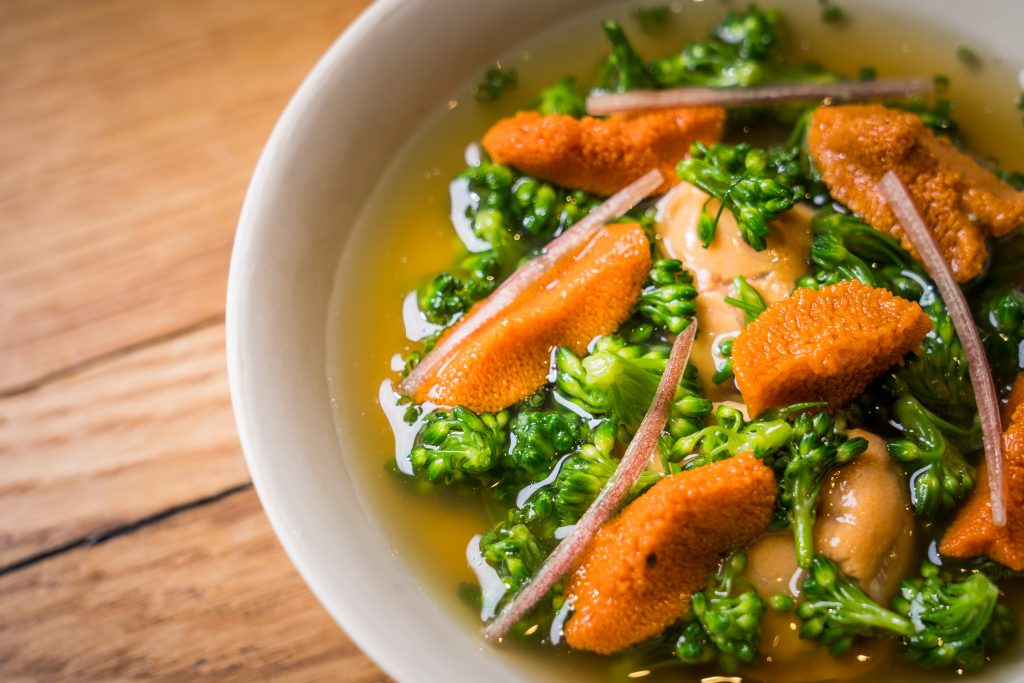
For instance, the first course of the tasting menu: egg waffle rolls – a cylindrical biscuit likened to the Spanish barquillo made from flour, sugar, eggs and butter. While the traditional recipe calls for the simple batter to be rolled into a hollow tube, Leung takes it one step forward with three different fillings: curry cauliflower, garlic leek crème fraiche and milk tea custard – one of Hong Kong’s intangible cultural heritages. The result is a dish that is familiar yet unfamiliar – brighter, with more layered flavours.
Then there’s his rendition of the classic Hong Kong salted fish and eggplant dish. Known for its distinctive fragrant savoury taste, the beloved homely delicacy is made more succulent with the addition of yuzu dashi sauce for a modest tangy boost, salmon roe and beetroot jelly topped off with homemade salted fish powder, which offer contrasting textures and an extra burst of umami. “The one dish on the menu that I’m the most proud of is the eggplant with salted fish because it’s a signature local dish of Hong Kong, but also because it perfectly combines the French and Japanese styles of cooking, which I think represents my style and background the most,” says Leung.
Also see: Henry Jacques: Love match with Rafael Nadal and Maria Perello
Similarly, Argentinian chef Paulo Airaudo, whose accolades include Michelin stars around the world – including Bottega in Geneva, which was awarded a star less than six months after opening, and now his daughter’s namesake restaurant Amelia located in San Sabastián that recently earned its second star, making Airaudo the first foreign chef in the Basque gastronomic region to achieve the accolade – also looks to his own life and experiences, from his Italian heritage to hometown of the city of Córdoba and other travels abroad, for inspiration. And this is best reflected in his approach for Noi, his new Asian flagship tucked away within the Four Seasons Hotel Hong Kong meaning “we” or “us” in Italian.
“Noi is a unique experience that reflects my authentic self and where I’m going along my culinary journey, from the food I grew up eating to what I love to cook and serve,” Airaudo says. “The overall design concept pays homage to my heritage by intertwining Italian architecture and contemporary furniture as well as a statement wine cellar, but there are also Japanese elements like tiles. I wanted the design to put people at ease, with a laid-back and fun atmosphere featuring a curated playlist of my favourite ’80s and ’90s hits, and playful decor inspired by my travels, favourite films and video games, as well as my many tattoos.”
Divided into two main sections, the Doodle Garden and the Italian Silhouette, the culinary experience begins with welcome drinks and canapés served in the former – a lounge boasting impressive city views, a marble-topped bar and ceiling adorned with marine entities – before continuing in the latter with the seasonal tasting menu of contemporary Italian fare. In Airaudo’s own words, it means that “we are not bound by tradition. I incorporate new ingredients and techniques that I’ve tried and learned from around the world to elevate classic Italian flavours and recipes.”
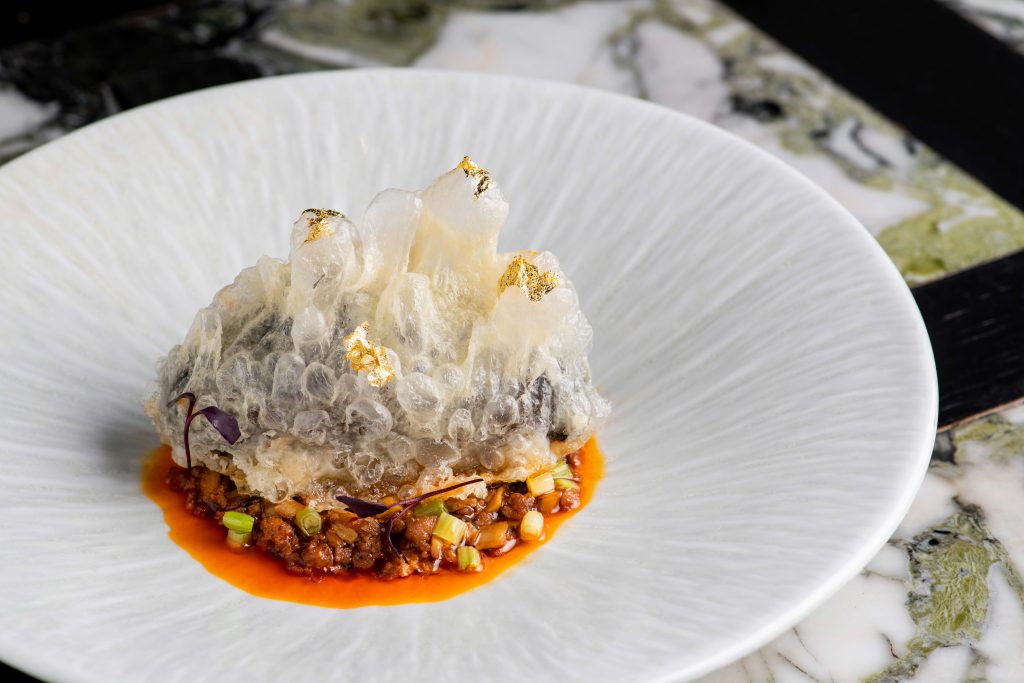
At Noi, the most prominent influence is Japan, with both Japanese and Italian cuisine sharing similar attributes that fall in line with his cooking philosophy of honouring high-quality seasonal produce and transforming each ingredient into a tribute to the farmers and its natural habitat. Yet, at its core, remains the essence of all that is Italian. Take his uni pasta, for example, a dish Airaudo says is close to his heart because “my family taught me how to make my own pasta” but is crafted with Japanese ingredients.
“Japanese and Italian cuisine are very similar in terms of how they treat ingredients regarding seasonality. Also, storytelling has an underlying importance to both cuisines,” the chef says. “As I learned more and more about Japanese produce and the concept of umami through books and travel, I was able to gain a lot of knowledge and inspiration on how to push my own cuisine forward.”
Whereas Airaudo turns to himself as a primary source of inspiration for his cuisine, executive chef Junno Li at The Chinese Library takes into consideration his guests and their experience for his new Kingdom Treasures menu, consisting of eight meticulous dishes based on traditional regional delicacies from China. “These are all ingredients and dishes that I’m very familiar with, and also long-standing local signatures that the people from the area are all familiar with,” says Li, who after moving to Guangzhou more than 20 years ago embarked on a culinary expedition that has taken him to various provinces and cities across China, from Guangdong to Shanghai and Hangzhou to Hunan.
“This menu is all about making these dishes better through the use of the best possible ingredients, cooking techniques, plating and making it more suitable for the Hong Kong palate.”
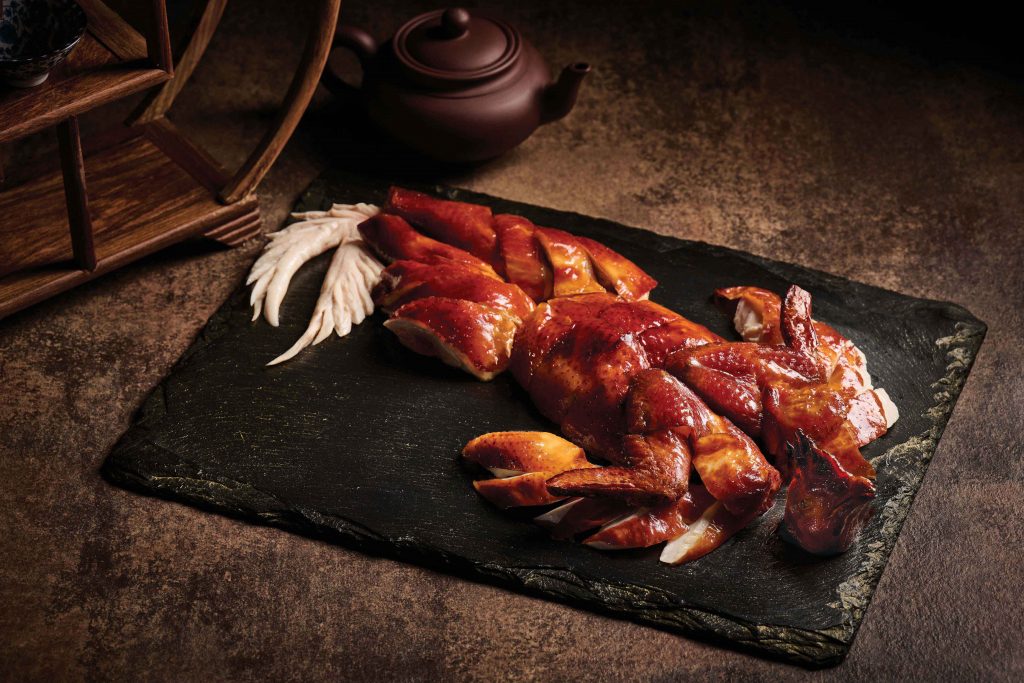
Li’s attention to detail is apparent with every dish arriving on the table more artful than the last. But it’s not just about being appealing to the eyes; each plating is functional and a crucial component of the creation. For example, his black sesame and walnut sweet soup with salted egg thousand-layer cake dessert.
Originally presented next to the soup on a single plate, the cake is housed in a mini bamboo steamer, which not only adds a touch of tradition but most importantly ensures that it is kept warm before diners dig in. Or, his take on the classic Hangzhou honey braised ham. The bite-sized dry-cured ham – glazed with osmanthus honey for a hint of floral sweetness – is sandwiched between crispy suckling pork and chewy hand-pounded rice cake for a less messy way of eating.
There’s also his prawn noodles and fish maw in pickled sauce, inspired by Shanghai’s famed drunken prawns. Rather than serving the prawns in the shell, as is the usual practise, Li extracts the meat, minces it together with fish maw for an al dente texture and moulds it into noodles served cold in a fragrant oil of prawn shells, peppers and Shaoxing nu’er hong rice wine.
Li doesn’t just consider the look and taste of the dish served. An integral element of this menu is nourishment. “According to Chinese culture, we need to eat different foods for different weathers. Like in the winter, we need to eat warm and invigorating foods. And so, when it came to cooking the ingredients, we made sure that the cooking techniques and methods we employed align with this principle,” he explains. “For example, the drunken prawn. Now that we’re moving out of summer and into autumn/winter, alcohol, in moderate amounts, is actually beneficial for the body. And because the weather is getting more dry, it’s actually good to eat it cold, not to mention that seafood served cold makes the umami stand out even more.”
Also see: Check out #legend100’s much-beloved gift guide
Also citing traditional Chinese medicine (TCM) principles as a key influence on her cuisine is hedge fund manager-turned-chef Sandy Keung of Table, who has made a name by serving dishes that showcase beloved local flavours using seasonal ingredients according to TCM principles and the 24 solar terms to keep the body in balance.
“Eating local seasonal ingredients has always been a big part of Hong Kong food culture and the basis of our own food heritage,” she says. “However, over the years we seem to have forgotten ‘local’ and simply eat ‘seasonally’. But there is always something in season somewhere around the world. The emphasis should be on both ‘local’ and ‘seasonal’. According to the Chinese holistic concept of ‘harmony between man and nature’, it is understood that if we eat what is in season locally in our own environment, we maintain harmony between us and our environment, and within ourselves. In turn, our well-being is optimised.”
As we step into the colder months, this could mean an amuse bouche of pear tart with mimolette and concentrated pear liquorice tea, a traditional Chinese herbal tea that nourishes one’s lungs; a rich, balanced “neutral” soup – which, according to TCM means foods that are neither yin (cool) or yang (hot) – of Chinese almond milk and 36-month Iberico jamon; and Japanese sea cucumber prepared with a sauce of smoked yellow croaker sourced from Ap Lei Chau fish market that pays homage to Keung’s childhood.
“Good food should always nourish diners both physically and mentally. Though, we are not trying to be food police or unrealistic and stop people entirely from their eating habits,” she explains. “Rather, these local seasonal vegetables and other ingredients are incorporated (or sneaked) into the menu so diners do not have to choose. Dishes also aim to showcase beloved local flavours using Western and Asian cooking techniques with ingredients from Hong Kong and around the world to create a conscious, ingredient-based cuisine that is uniquely Hong Kong and uniquely ours.”
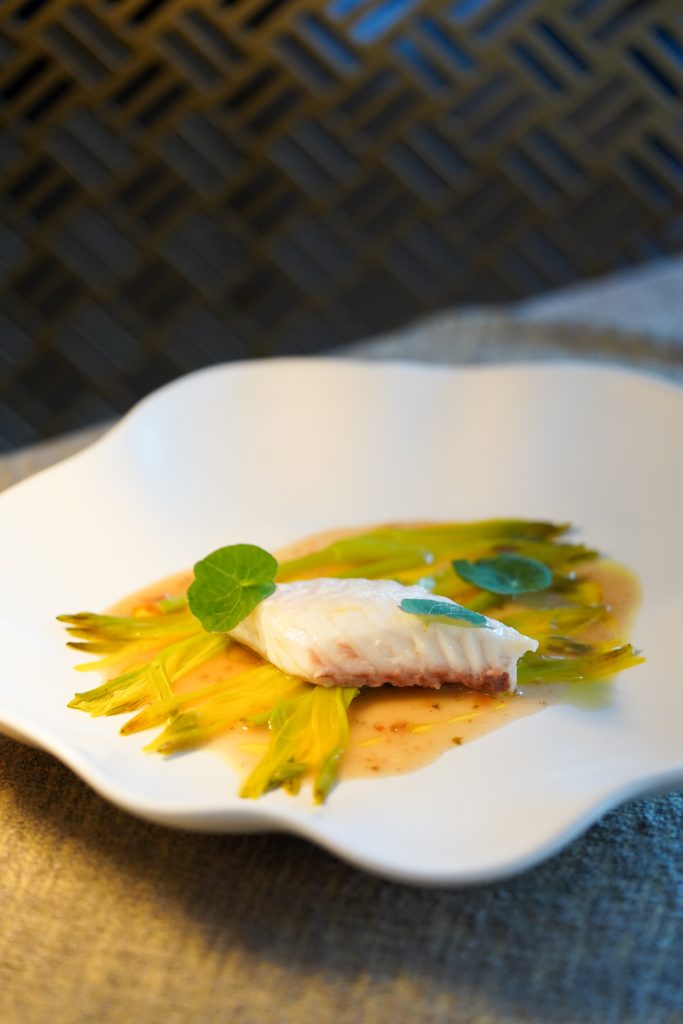
Working in a similar vein is executive chef Jayson Tang and head chef of Chinese barbecue Cheung Wai Hung of Michelin-starred Man Ho, whose latest creations take one of the hallmarks of Cantonese fare to the next level via an authentic but contemporary approach. “Siu mei has a long history and is very particular about the craftsmanship. You can easily find these well-loved dishes on the dining table of every household,” says Cheung. “I hope to inherit the familiar flavours and innovate them by crafting siu mei in an unprecedented way, as well as take these down-to-earth delicacies to the next level and present them on the fine-dining table of a Michelin-starred restaurant.”
The highlight of the menu, Flying Roast Chicken – among other delicacies of crispy roasted pork belly and barbecued pork with honey sauce that utilise “extra steps on the cooking process to elevate the dish” – infuses hormone-free and locally raised Ping Yuen cockerel with roast goose flavour by way of an extensive two-day process that includes marinating the chicken in a homemade sauce of herbs and spices; immersing it in a luscious soup of goose meat, bones and juices; and vacuum-sealing it for 24 hours to lock in the flavour before coating the whole with sugar and vinegar to keep the skin crisp, air-drying it for another eight hours and, finally, roasting it in the oven. Served with the iconic plum sauce alongside, the finished dish is an intriguing amalgamation of roast goose and chicken.
Also see: Christmas 2022: Where to have an unforgettable dinner
“There is a saying in traditional Chinese medicine that goose meat is a ‘trigger food’ that may cause skin allergies or the recurrence of pre-existing medical conditions,” Cheung says of the inspiration. “Some customers therefore avoid goose meat but they still would like to enjoy the flavours of roast goose. Hence, we came up with an idea – why don’t we try to make a roast chicken that tastes like a roast goose?”
And the rationale is simple: chicken makes for a better taste. “Compared with goose, chicken has a softer and more tender texture that makes it easier to absorb flavours from the marinade to create a different taste that imitates the roast goose,” he says. “Additionally, the fat content, especially the subcutaneous fat of chicken, is less than that of goose. So using chicken can reduce the greasiness, yet diners can still taste the crispy skin from the roast chicken, just like the roast goose. Although the whole preparation and cooking process takes two days, it takes a shorter time to roast a chicken than a goose, which means that we could maintain the freshness of the meat more effectively, and always ensure that this siu mei is served fresh and piping hot to our guests.”
Where:
1111 Ones Restaurant & Lounge – 11/F, 18 On Lan Street, Central
Noi – Level 5, Four Seasons Hotel Hong Kong, 8 Finance Street Podium, Central
The Chinese Library – Block 01, Tai Kwun, Police Headquarters, 10 Hollywood Rd, Central
Table – 8/F, The Pemberton, 22-26 Bonham Strand, Sheung Wan
Man Ho – Level 3, JW Marriott Hotel Hong Kong, Pacific Place, 88 Queensway, Admiralty
Also see: Surprise a loved one with these home gifts this Christmas




